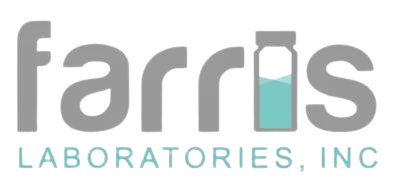The Uses of Bacteriostatic Water and Where to Get it
So, what is bacteriostatic water? Bacteriostatic water is a solution of sterile water and benzyl alcohol. This solution is used to create a solution of various medications for the application of that medicine through injection.
There are various uses for bacteriostatic water in medical applications, such as dilution, or as a solvent, and it even has a general use purpose in the home. All of these situations require a solvent that carries zero microbial load and acts as a preventative against microbial growth.
Can I Use Sterile Water Instead of Bacteriostatic Water?
This is a common question for those unfamiliar with microbiology, as well as those who may recently have been prescribed medication that requires dilution or solution.
While you can, it should be mentioned that sterile water used for injection is different than sterile water used for washing, cleaning, or irrigation. So you will want to be sure to check the label and usage of sterile water before application.
Also, due to the lack of benzyl alcohol, sterile water for injections can only be used once, since it can easily become contaminated. Which reduces its practicality for medical injections, especially with multiple-use medications. The main difference between sterile water vs bacteriostatic water is the addition of preservatives, such as benzyl alcohol added in bacteriostatic water.
Most of the time, medications that require dilution will mention which water is supposed to be used along with the directions.
So while you can use sterile water instead of bacteriostatic water, always use what water is given in the directions. If you have questions about what water to use, such as if it is not indicated on the label, call your doctor. Your doctor is the ultimate reference to your medication.
Does Bacteriostatic Water Go Bad?
Bacteriostatic water for injections does indeed go bad.
It is recommended that after you open, or use a vial of bacteriostatic water, that you dispose of it after 28 days. This is because the effectiveness of benzyl alcohol as a preservative loses its potency with repeat use and exposure.
This can cause bacteria to thrive inside the vial. Since many bacterial infections are largely invisible to the naked eye, it’s simply best practice to throw it away 28 days after its initial use.
However, if left unused, bacteriostatic water can be stored and left alone.
To store bacteriostatic water for injections simply::
- Find a relatively cool location, between 60 - 80 degrees Fahrenheit.
- Make sure this location is kept out of sunlight, preferably a cabinet.
This can increase the shelf life of the vials for months and potentially years.
Where To Get Bacteriostatic Water
Bacteriostatic water for injections can be purchased online through various suppliers, Amazon included. However, we strongly recommend that you purchase bacteriostatic water directly from a medical supplier or pharmacy.
If you need bacteriostatic water for a medication today, you can shop around at various local pharmaceutical retailers, such as Walgreens, CVS, or Walmart. Their pharmacies should have bacteriostatic water in stock and have trusted suppliers for this product.
Despite what online media would have you believe, it is unsafe to try to make bacteriostatic water at home. The home is one of the most biologically active spaces people inhabit. Meaning that even the air carries a bacterial and fungal load.
For instance, most people are unaware that MRSA, which causes staph infection, perpetually lives on the skin. That is not sterile.
These suppliers have access to tens of thousands of dollars worth of equipment specifically to avoid such a scenario.
You will put your health at risk trying to make bacteriostatic water.
What Are Some Uses of Bacteriostatic Water?
Bacteriostatic water has many uses besides just in the medical field, though the most common comes with the application of medicine.
For instance:
- Concentrated liquid medicines that contain multiple uses may require dilution with bacteriostatic water.
- Powdered medicines may be prescribed that require a solvent to be prepared for injection.
- Bacteriostatic water can be used to clean, or simply used, in equipment to prevent bacterial growth, such as a humidifier.




